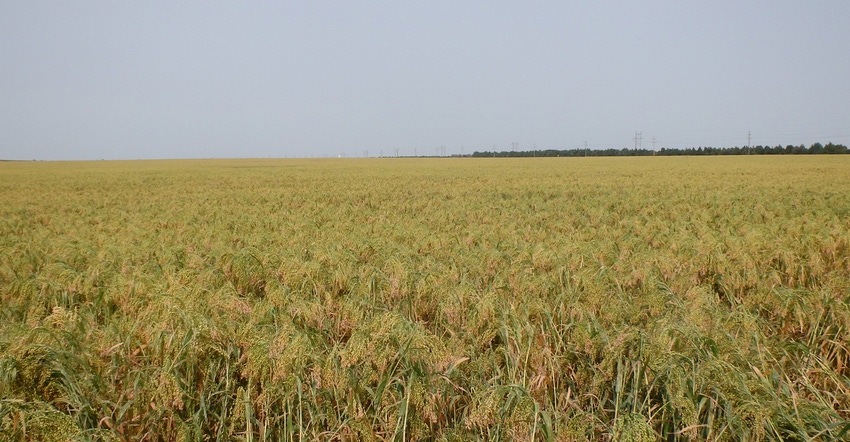February 4, 2019

Proso millet could become a key crop in water-limited areas now that its genome has been sequenced, opening the door to greater and more rapid yield improvements.
An international consortium of Chinese and American public sector researchers and Iowa-based company Dryland Genetics recently announced the publication of the proso millet genome in the journal Nature Communications.
Proso millet's strong suit is its ability to grow with less water per bushel produced than any other cereal crop, even on poor-quality land. One of the earliest crops to be domesticated, archaeological evidence suggests proso millet was first grown by farmers in Northern China more than 12,000 years ago. It then spread across Asia and Europe along the earliest trade routes, finally reaching North America with early European settlers.
The sequencing of the proso millet genome has enabled Dryland Genetics to use modern statistical genetic breeding tools to develop new, more productive varieties of proso millet. It also is anticipated that this new genome sequence will accelerate the development of varieties adapted to new regions.
"Living in Nebraska, the limits of the water supply are never far from my mind," says James Schnable, one of the founders of Dryland Genetics, assistant professor at the University of Nebraska-Lincoln and an author on the study. "A lot of people have put a lot of time and effort into trying to make corn use less water while producing the same amount of grain. Our idea was to instead identify a crop that already uses water efficiently. It turns out it's much easier to make a water-use-efficient crop higher yielding than to make an existing high-yielding crop, like corn, use water more efficiently."
About 500,000 acres of proso millet are planted in the U.S. each year, primarily in water-limited regions of Colorado and western Nebraska.
Only six varieties have been developed in the past 30 years, and only two of these — Huntsman and Sunup — are adapted to most of Colorado. The newly sequenced genome makes it straightforward to identify hundreds of thousands of genetic differences among diverse proso millet varieties collected from all over the world, enabling Dryland Genetics to select lines to mate with each other to produce new varieties adapted to any part of the world, whether the High Plains of the U.S., Inner Mongolia in China or the Caspian Steppes of Ukraine.
"This technique of genomic selection is being widely used in corn breeding to enhance the rate of genetic gain per year," says Dryland Genetics co-founder and Iowa State University distinguished professor Patrick Schnable. "Dryland Genetics has used genomic selection to achieve double-digit percent yield increases of proso millet in the High Plains."
"It is becoming increasingly urgent to develop new crops that can thrive in semiarid conditions, given increasingly variable rainfall and competing demand for existing water from agricultural and urban use," Schnable adds.
"This will have a huge potential impact on the region's rural economy," says Dipak Santra, associate professor at the University of Nebraska Panhandle Research and Extension Center. "Proso millet's direct value to (the semiarid High Plains of the U.S.) is $45 million per year, but considering its benefits to the dryland production systems, the total value of proso millet to the region's economy could be closer to a billion dollars."
Economically, proso millet's future is bright. In North America and Europe, it primarily is used for bird seed and sees limited use as cattle feed, but in some parts of the world, it is an important food for human consumption.
Proso millet has a high nutritive value similar to wheat, rice and corn. It is gluten-free, easy to digest and has a low glycemic index, so there is potential for wider popularity.
Source: Dryland Genetics, which is solely responsible for the information provided and is wholly owned by the source. Informa Business Media and all its subsidiaries are not responsible for any of the content contained in this information asset.
You May Also Like




